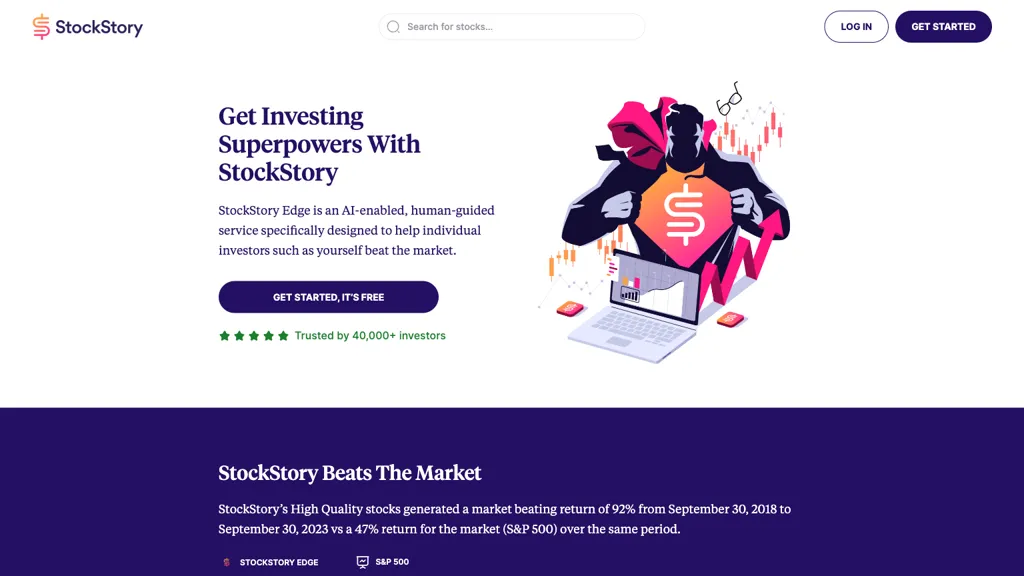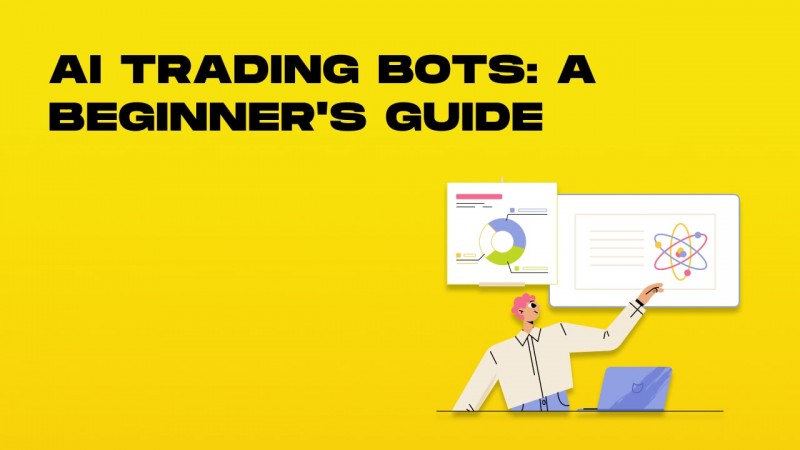Top 10 Tips For Assessing The Performance And Accuracy Of Ai Trading Platforms For Stocks
To make sure you're using a platform capable of providing accurate and reliable forecasts and insights, it is important to evaluate the accuracy and effectiveness of AI stock-predicting and analyzing platforms. Here are 10 top tips to assess these platforms.
1. Backtesting Results
What to look for: Find out whether a platform offers backtesting capabilities that can determine the performance of its predictions based on historical data.
Why it is Important : Backtesting is a way to validate the validity of an AI model by comparing its predictions to historical results.
Search for platforms that have the possibility of setting backtesting parameters.
2. Real-time Monitoring of Performance
What to Look For What to Look For: Examine the performance of the platform in the market in real-time.
Why is it important: The platform's real-time performance gives a more accurate measure of its effectiveness rather than relying on only historical backtesting.
Utilize a free trial or demo account to observe and compare the accuracy of real-time forecasts to actual market activity.
3. Prediction Error Metrics
What to look for Look for metrics such as Mean Absolute Error (MAE) or Root Mean Squared Error (RMSE), or R-squared to quantify prediction accuracy.
Why It Matters: These measures provide a quantitative measurement of how accurate the predictions are to actual results.
Tip: Platforms which openly share these metrics are generally more transparent and trustworthy.
4. Ratio of Success and Win Rate
What to Look for: Look at the winning rate of the platform which is the percentage of predictions that are correct. Also, look at its success ratio (the profit of trading using predicted outcomes).
Why It Matters : A high success ratio and win rate indicate a better predictive accuracy, and thus a higher chance of profit.
You should be wary of sites that boast of having a very high win rate (e.g. 90%) %+),) as there is no way to ensure 100 100% success.
5. Benchmarking Market Indicators
What to look for What to Look For: Compare the platform's forecasts and performance to major market indices (e.g., S&P 500, NASDAQ).
Why It Matters This is important because it helps determine if this platform outperforms (or underperforms) the wider market.
Tip: Do not only look for short-term gains, but also a consistent performance over a long time.
6. Consistency in Market Conditions
What to look for What to Look For: Examine the performance of the platform in various markets (bull markets and bear markets, as well as high volatility).
The reason it's important A solid platform can perform effectively in all markets, not just those that are in good conditions.
Tip: Test the predictions of the platform during volatile periods or market declines.
7. Transparency in Methodology
What to Look For Learn about the AI algorithms and models that are employed (e.g. neural networks and reinforcement learning).
Why it is Important Transparency is crucial since it lets you assess the reliability and scientific accuracy of the platform.
Avoid platforms using "black box models" that don't clarify how to generate predictions.
8. User Reviews and Independent Testing
What to Look For: Read user reviews and look for independent testing or third-party evaluations of the system.
What's important: Independent reviews, testing and assessments provide objective and objective information about the platform accuracy and performance.
Tip: Look for reviews on forums like Reddit, copyright or financial blogs.
9. Risk-Adjusted Returns
What to Look For How to evaluate the platform's performance using risks-adjusted indicators such as the Sharpe Ratio or Sortino Ratio.
Why it Matters: These metrics consider the level of risks taken to obtain returns. This gives a complete overview of the performance.
Sharpe Ratios that are higher than 1 indicate higher returns, risk-adjusted.
10. Long-Term Track Record
What to look for: Determine the platform's overall performance over time (e.g. 3 to 5 years).
Why it is Important Why it is Important: Long-term results are a better indication of reliability than results in the short term.
Tip: Avoid websites that showcase only short-term success or cherry-picked results.
Bonus Tip - Test your account with an online version
Demo accounts or free trials allow you to test the platform's predictions in real-time without the risk of putting your money at risk. This allows you to test the accuracy and effectiveness.
With these suggestions, you can test the accuracy as well as performance of AI platforms for stock analysis and prediction. Choose one that is in line with your needs for trading and the risk you are willing to take. Remember that no system can be guaranteed to be 100% accurate, so using AI insights along with the results of your own research is typically the best approach. View the top rated ai trading for more tips including ai investment app, best ai trading app, investing ai, ai investing, ai investing platform, investment ai, ai stock picker, using ai to trade stocks, ai investing app, trading with ai and more.

Top 10 Suggestions For Evaluating The Speed And Latency In Ai Stock Predicting/Analyzing Platforms
When you are evaluating AI trading platforms which predict/analyze price movements speed and latency are crucial factors, especially for high-frequency and algorithmic traders. Milliseconds delay could affect trading execution. Here are ten top suggestions to determine the speed and latency of these platforms.
1. Real-time Data Feeds to be used for evaluation
Time to deliver data: The platform should provide real-time, accurate data within a short period of time (e.g. with sub-millisecond delays).
Data source proximity – Check to see if your servers of your platform are close to important exchanges. This will cut down on data transmission times.
Data compression: Check for effective methods for data compression that will speed up the delivery of data.
2. Test the speed of trade execution
Speed of processing orders How fast the platform processes and executes trades following your submission of an order.
Direct market access (DMA) Check if the platform offers DMA, which allows orders to be sent directly to the exchange, without intermediaries.
Execution Reports: Check if your platform has complete reports on the completion of orders, with timestamps.
3. Examine the Platform's Responsiveness
User interface (UI) speed: Test the speed at which the UI of your platform responds to your inputs (e.g., clicking buttons, loading charts).
Chart updates: Verify if charts and visualizations update in real-time, without delay.
Performance of mobile apps If you are you're using a mobile app, ensure it performs similarly to the desktop version.
4. Check for Low-Latency Infrastructure
Servers' locations The platform must use high-speed, low-latency servers which are situated near major financial hubs or exchanges.
Co-location Services: Verify if the platform allows co-location. This will permit you to store your trading algorithms on servers that are close to the Exchange.
High-speed networks: Determine whether the platform is using fiber-optic networks with high speeds or other low-latency technologies.
5. Backtesting the simulation speed and test backtesting
Find out how fast your platform is able to process and analyze past data.
Simulation latency: Ensure the platform simulates trades in real-time with no any noticeable delays.
Parallel processing: Make sure the platform is using parallel processing, or distributed computing, which speeds the process of complex calculations.
6. Estimate API Latency
API response: The platform's API is measured by the time it takes to respond to requests.
Rate limits. Check to see if there are reasonable limits for the API. This can assist in avoiding delays in high-frequency transactions.
WebSocket Find out if your platform is compatible with WebSocket protocols which permit streaming data in real time with minimal latency.
7. Test Platform Stability Under Load
High-volume Trading: Create huge numbers of trading scenarios to see if the platform is stable and responsive.
Test your platform during periods of extreme market volatility.
See what tools are that allow you to test strategies in extreme situations.
8. Assess the connectivity and network of your choice
Speed requirements for Internet: Make sure that your connection is at the recommended platform speed.
Redundant connections: Find out if the platform has redundant internet connections in order to avoid the possibility of downtime.
VPN latency: If using a VPN, verify whether it causes significant latency and whether the platform has alternatives.
9. Make sure you are aware of features that speed-optimize your computer.
Pre-trade analysis The platform should offer analysis of the trade in order to improve process of routing orders and speed up execution.
Smart order routing: Determine if your platform is using SOR to find the most efficient and speediest execution venue.
Monitoring latency Ensure that your platform permits you to monitor and analyze your latency on a live basis.
10. Review Feedback from Users and Benchmarks
User reviews: Read user feedback to assess the platform’s performance on latency and speed.
Benchmarks from third-party sources: Search for independent benchmarks and reviews which evaluate the platform's performance to its competitors.
Case studies: Determine if a platform has case studies or testimonies which highlight the features that are low-latency.
Bonus Tips
Free trial period: Test the platform’s latency and speed in real-world situations using a demo or free trial.
Customer support: Make sure the platform has support for customers to help optimize latency and other issues.
Hardware requirements. Examine the platform needs specialized hardware (e.g. the latest high-performance computer) in order to run at optimal speed.
These tips will help you assess the speed of AI trading platforms that forecast or analyze price fluctuations in stocks. You can pick a trading platform that is the most suitable for your needs in trading and reduces any delays. Low latency, especially for high-frequency and algorithmic trading, is vital. Even small delays have the potential to greatly impact profits. Follow the top rated ai investment tools advice for blog examples including ai investment tools, can ai predict stock market, ai for trading stocks, how to use ai for copyright trading, ai in stock market, ai share trading, ai stock prediction, best ai stocks to buy now, best ai penny stocks, ai share trading and more.

Comments on “20 Recommended News To Deciding On AI Stock Investing Platform Websites”